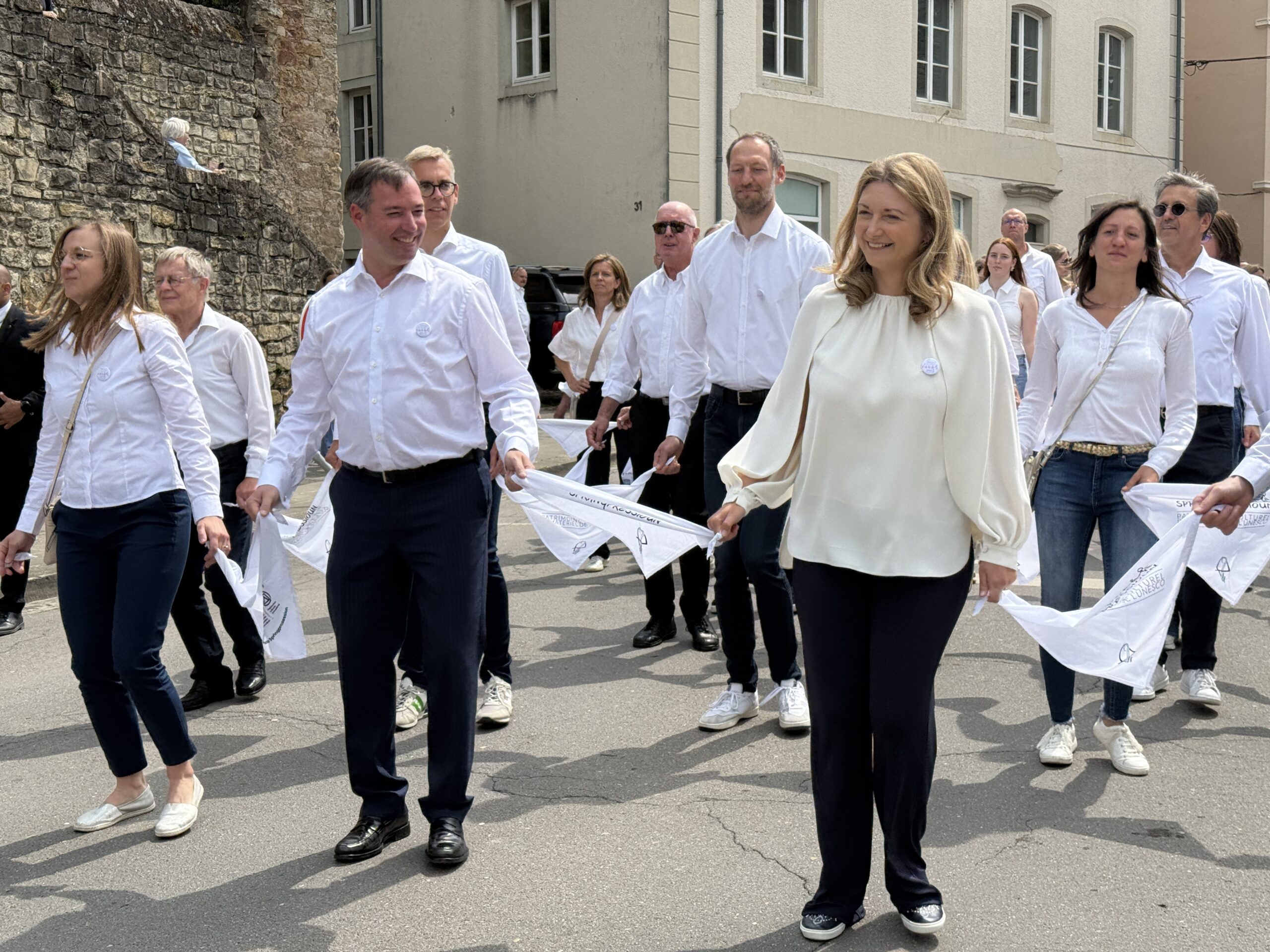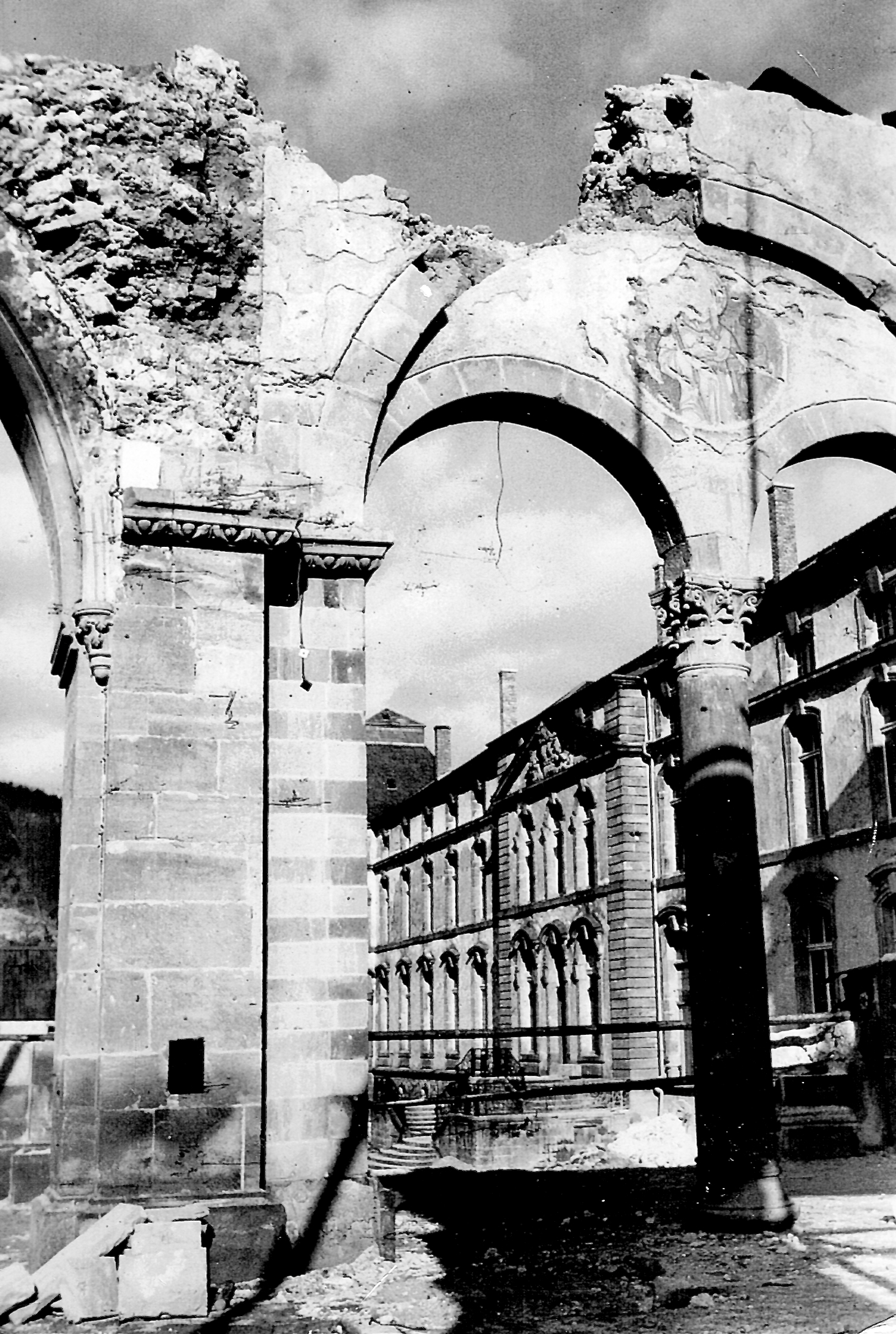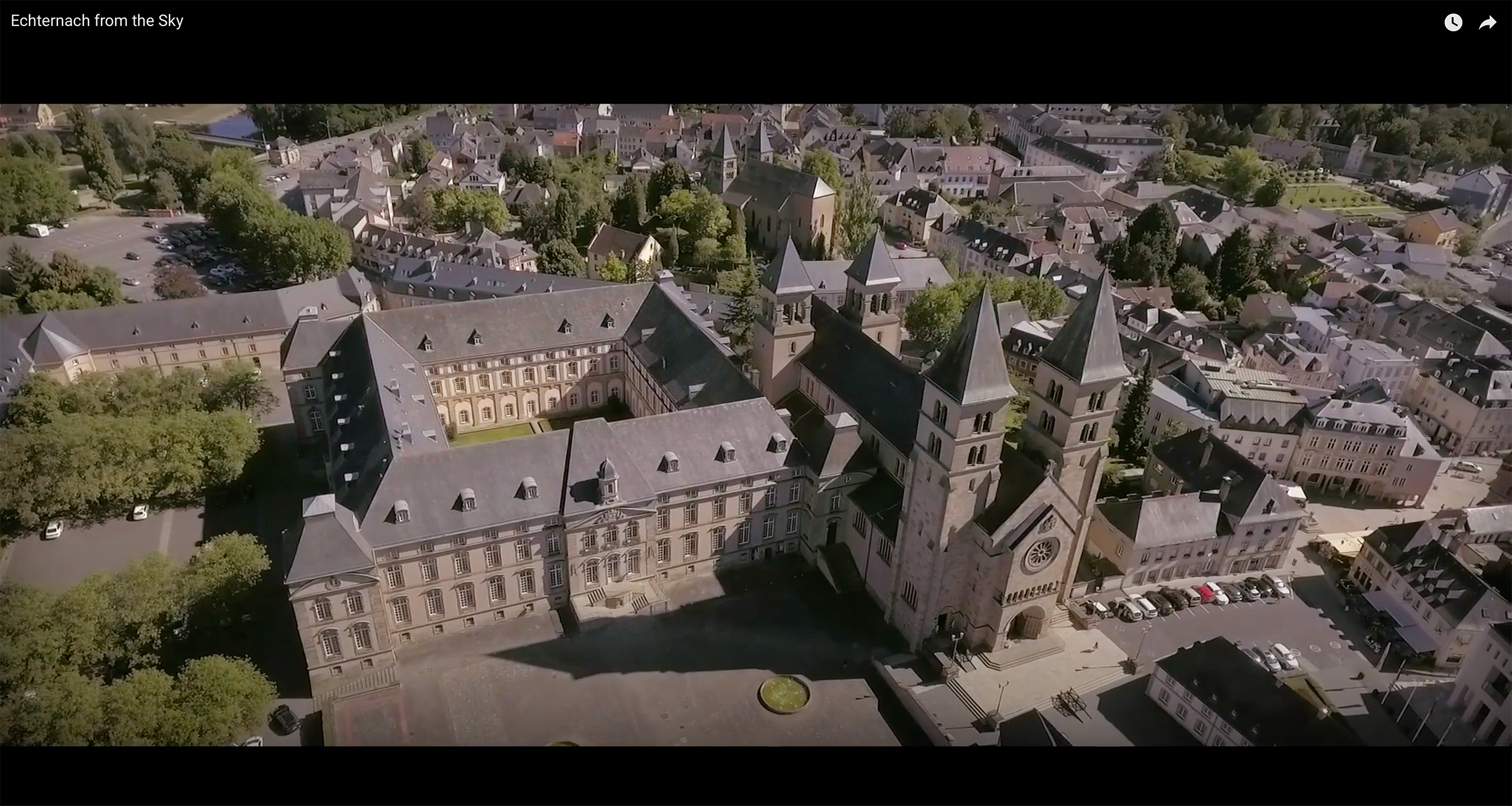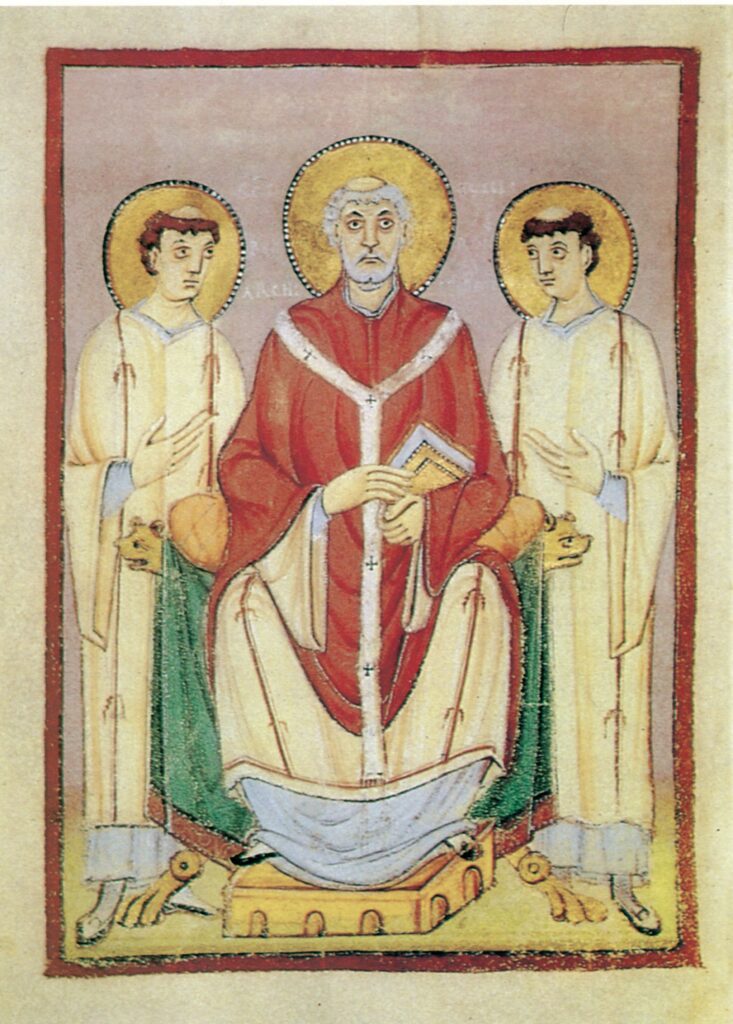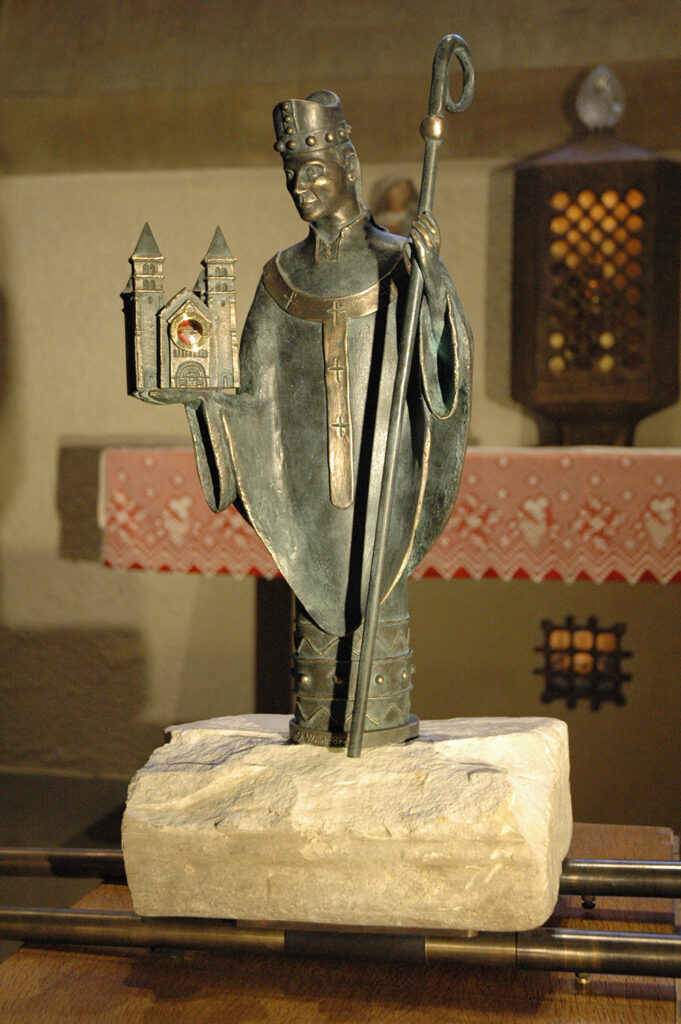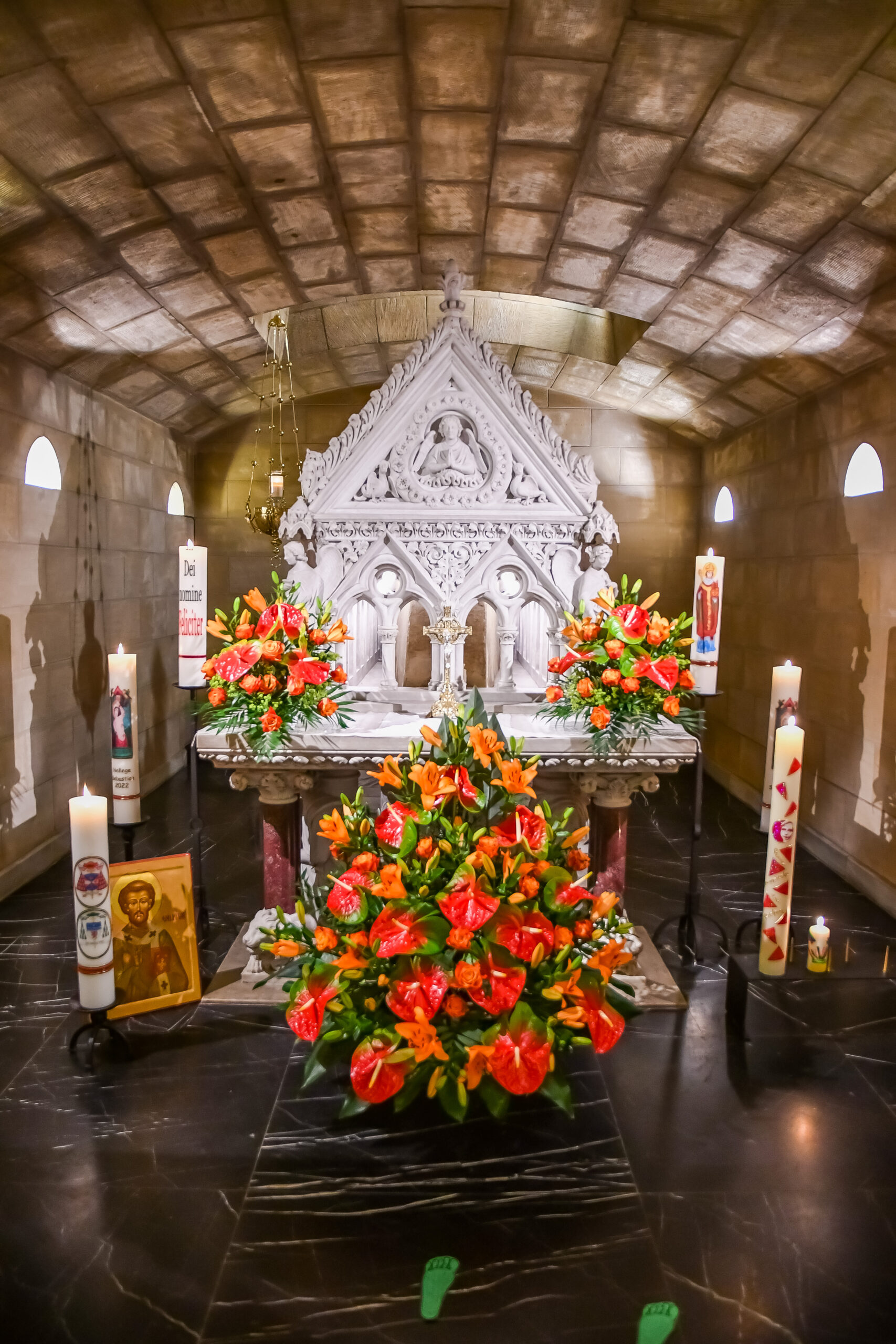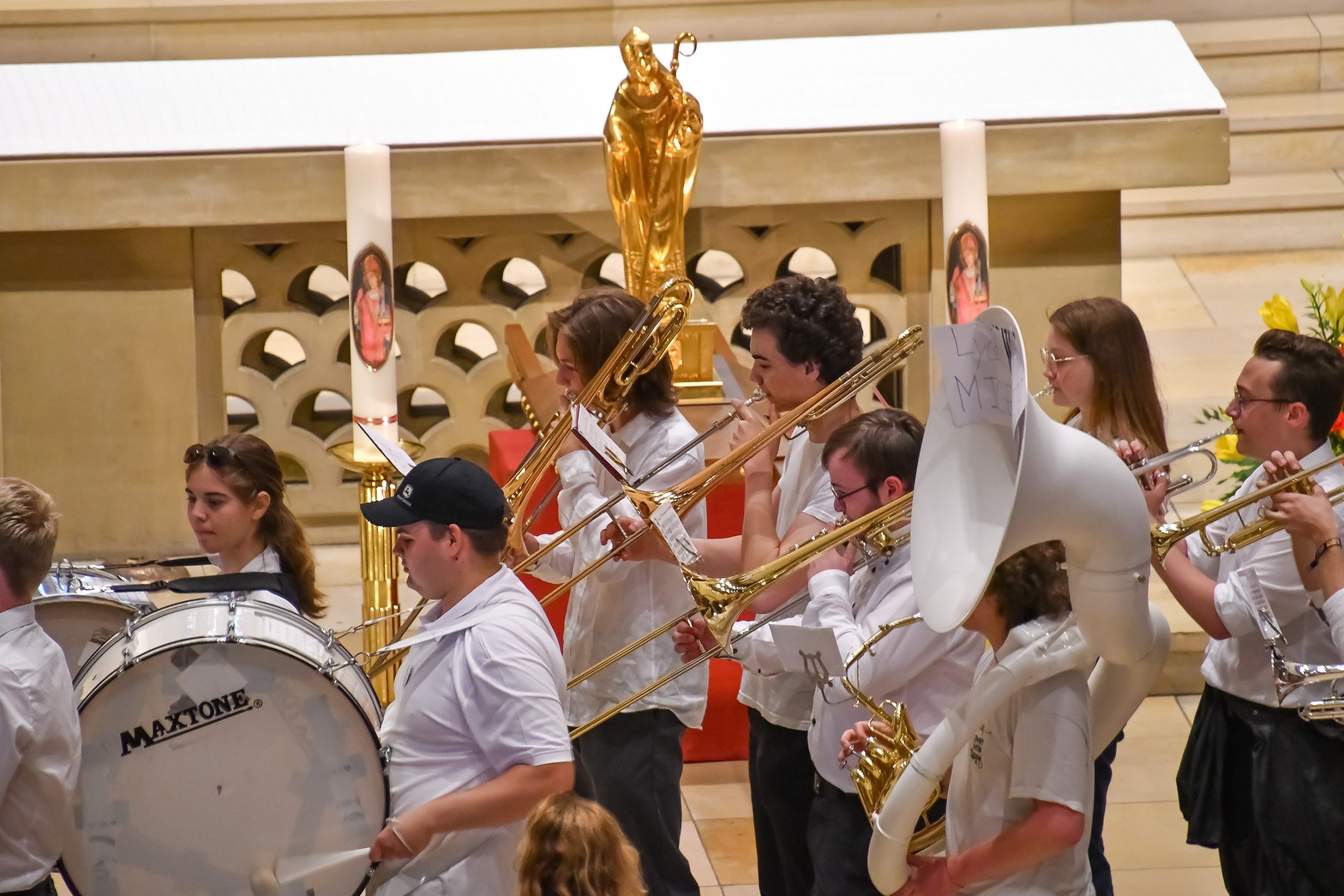Basilica & Willibrord
The story begins when Willibrord lays the foundation stone of his monastery around 700.
NEWS
03
JUL

Eucharistische Anbetung & Vesper
Jeden Donnerstag (ausser Schulferien)
18.30 Anbetung | 19.00 Vesper
Basilika St. Willibrord
18.30 Anbetung | 19.00 Vesper
Basilika St. Willibrord
+
Read more...
04
JUL

Orgel Punkt 12
Konzert Saxophon und Orgel
Sigurdur Flosason & Jos Majerus
Freitag 4. Juli | 12.00 Uhr
Basilika St. Willibrord
Sigurdur Flosason & Jos Majerus
Freitag 4. Juli | 12.00 Uhr
Basilika St. Willibrord
+
Read more...
09
JUL

Carillon | Klackespill
Carillon Konzert
Mittwoch 9. Juli | 11.00 Uhr
Carillon Basilika St. Willibrord
Mittwoch 9. Juli | 11.00 Uhr
Carillon Basilika St. Willibrord
+
Read more...
The proud four-towered Basilica is a symbol of "Heavenly Jerusalem", a sign of God's mysterious presence on earth.
Basilica
Over 1300 years of history


698 - foundation of the monastery by Willibrord (658-739)
around 800 - second church and crypt
Willibrord is venerated as a saint shortly after his death.
More and more pilgrims visit his tomb. Around the year 800 the small Merovingian church is replaced by a three-nave church over 60 meters long. The excavations brought to light two apses: one facing east and the other west.
The current crypt, with five barrel-vaulted naves, dates from the Carolingian building (around 800).
1031 - construction of a third church
In 1016 the Carolingian church is destroyed by fire. The reconstruction reuses the existing walls and is finished in 1031. The dimensions and architectural layout of this church largely correspond to those of the current building.
The arcades of the central nave have a particular shape. A large arc rests on each side on a massive pillar decorated with an egg-and-dart ornament. Two smaller arches are in between and rest on a column with a Corinthian capital. This alternation of supports is called the "Echternach system".
In the apse two Romanesque capitals have been preserved.
Under Abbot Arnold I (1242-1269) the abbey was transformed in the Gothic style (a ribbed vault replacing the flat ceiling). The rib-vaulted aisles have been preserved.
1794 - French Revolution
In 1794, the town of Echternach was taken by French Revolutionary troops who plundered the abbey. It is the end of the Benedictine presence on the banks of the Sûre, and of the over one thousand years' activity of the monks.
The abbey was transformed into a pottery and later into a place of military exercise. In the middle of the 19th century, part of the building fell into ruins.
1868 - reconstruction of the building
The 'Willibrordus Bauverein', founded in 1862 by the citizens of Echternach, takes charge of the reconstruction of the building. The towers of the west facade are rebuilt (according to the plans of the cathedral architect of Trier Chr. W. Schmidt) and a new porch is built according to the plans of August Othmar Essenwein (from Nuremberg). The church is rededicated in 1868.
Visitor Center
The Visitor Center (entrance in the left side nave) offers the visitor a survey of the construction history of the Basilica and of the Dancing Procession. A memorial tablet recalls the inscription of the Procession on UNESCO’s list of Immaterial World Heritage on November 16th, 2010. The large painting was created by Lucien Simon for the Paris International Exhibition of 1937.
In the old funerary corridor (access to the Sacristy), now a lapidary museum, are fragments of funerary monuments and statues from the abbey church before the French Revolution, as well as the clapper of the old St Sebastian bell (destroyed in 1944), and two statues from the orangery.
1945
1953
1949-52
before 1939
The Basilica is the burial church of its founder, pilgrimage church and parish church at the same time.
Media
Flyer (Guided tour) in different languages

WILLIBRORD
658 - 739
658
688
Rathmelsigi - Carlow
During the seventh and eighth centuries the archaeological site of Rath Melsigi, County Carlow, is the most important Anglo-Saxon ecclesiastical settlement in Ireland. It was here that Willibrord and many other Englishmen were trained for the continental mission.
In 690 Willibrord led a successful mission from Carlow, made up of Irishmen and Englishmen. Willibrord established an important scriptorium in his Monastery of Echternach, and for a considerable period the Abbey produced many of the bibles, psalms and prayer books that are to be found today in the great libraries of Europe. It is likely that the first generation of these scribes were from County Carlow or had trained here.
In 2019 the restored early medieval Cross of Rath Melsigi is inaugurated in the presence of a delegation from Echternach, led by Mayor Yves Wengler.

Media
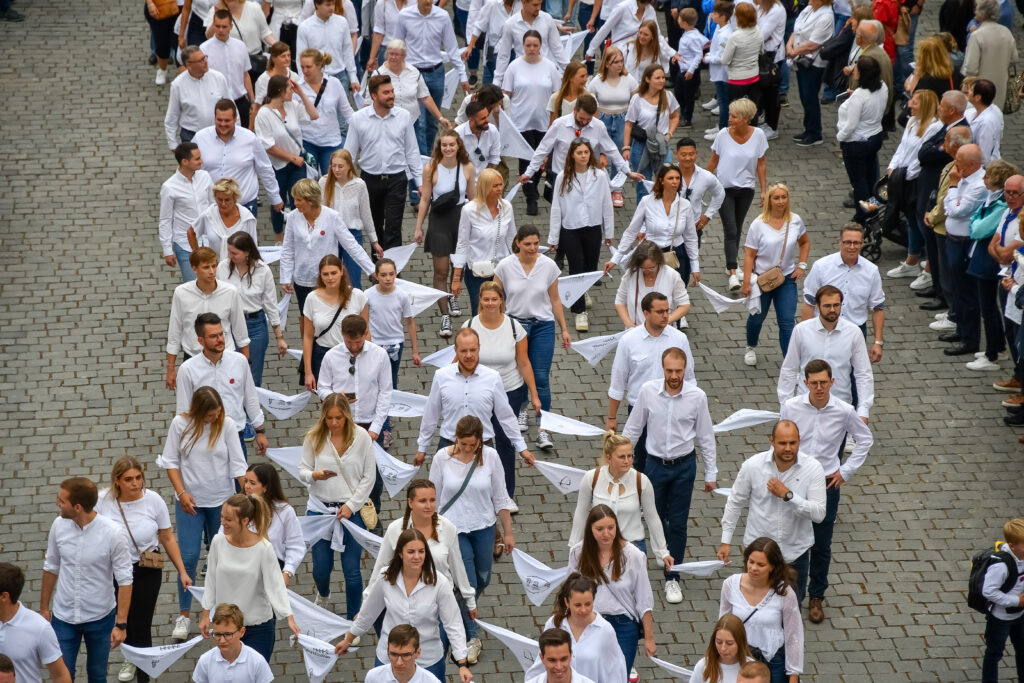
Dancing Procession
Pentecost Tuesday
Every year on Pentecost Tuesday, the Dancing Procession is celebrated with fervor and attracts thousands of participants and as many spectators, as well as some forty musical ensembles. It is a question of honoring the memory of Saint Willibrord, a saint of European stature, often called the Apostle of BENELUX or the Apostle of Europe.
The origins
Already in the 11th century, Abbot Thiofrid mentions a massive influx of pilgrims. It is only at the end of the 15th century that the "dancing saints" are mentioned, i.e. those faithful who have committed themselves by a vow to participate in the procession by dancing. At the end of a pilgrimage which lasts several days, they hop through the streets of Echternach according to the principle "Like is healed by like". This is how they try to cure or prevent diseases such as epilepsy, chorea or ergotism. It cannot be said with certainty whether these are medieval dances or whether pre-Christian worship elements have blended into the "dancing procession".


Media

Pilgrimage
Media

Pilgrimage office
Are you planning a pilgrimage to Echternach or a visit of the Basilica? Please contact us, we will be happy to help you.
Pilgrimage office
Office hours:
Tuesday to Thursday
10.00 a.m. – 12.00 p.m
L-6486 Echternach
We can be reached outside office hours via email or telephone.

Information



